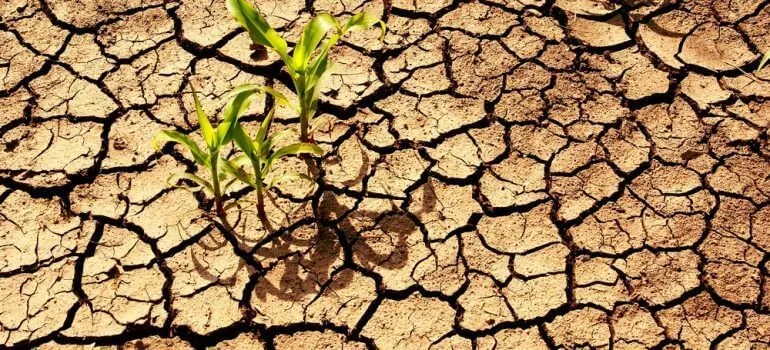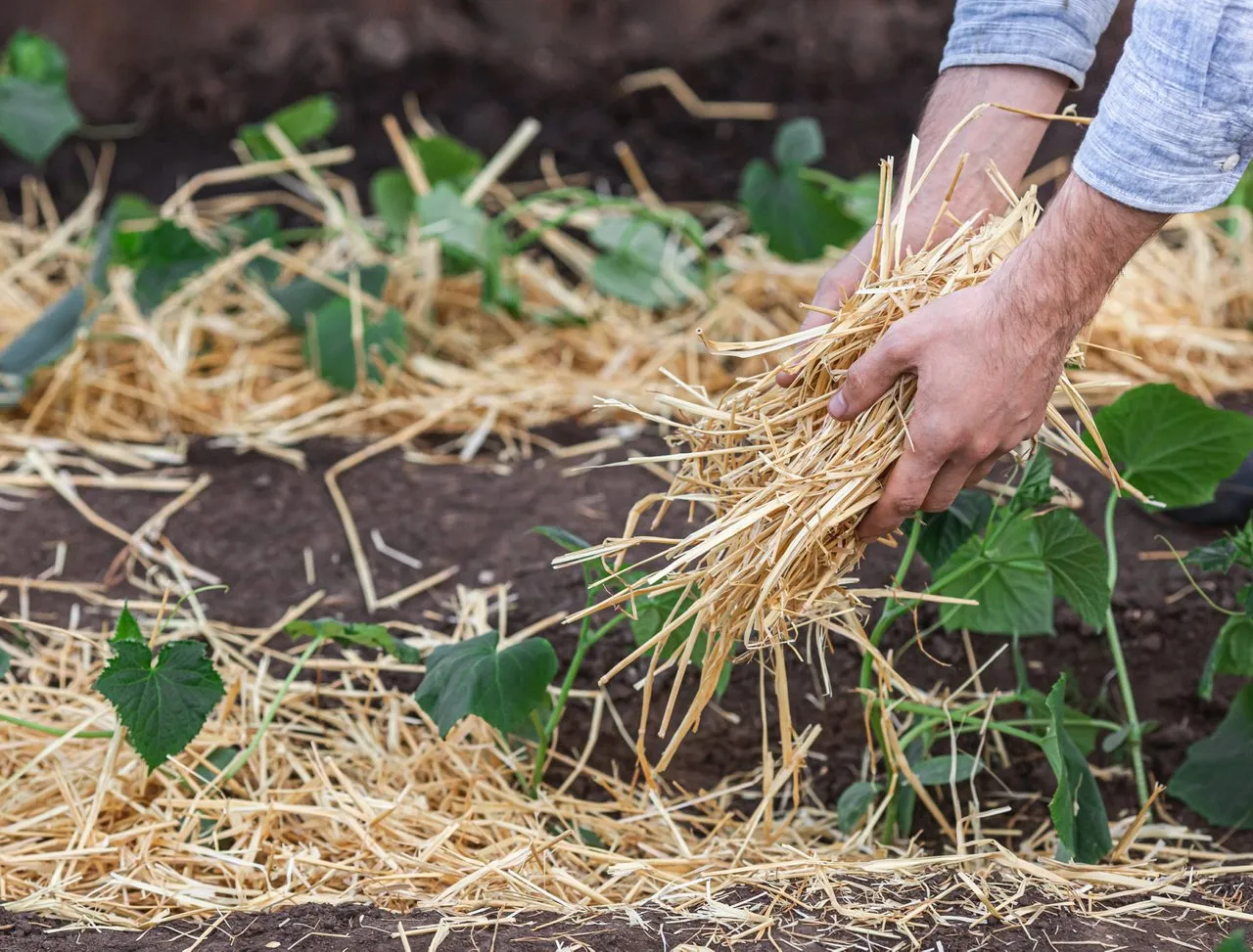The Summer temperatures are higher than ever, and water levels have never been this low. Emergency measures are implemented, resulting in reduced water available to irrigate farms and gardens. Rains are not to be expected anytime soon, and the already parched garden plants are most probably doomed. What may seem like an exception is supposed to become the norm in the following years. How can a gardener prepare for such a future? Is there anything you can do? Fortunately, this is not the first time humans have faced extreme droughts. Our ancestors have developed fantastic techniques to farm with minimal irrigation. Techniques that want to be rediscovered and utilized.

Dry Farming
The idea behind Dry Farming or Dryland Farming, is to rely exclusively on the natural rainfall during the wet season, to carry the plants successfully through the dry months. In order to do this, a number of techniques must be applied to make the most of the available moisture. Not surprisingly, the cultures that have acquired most of this knowledge happen to be located in arid climates, such as the Middle East, the Mediterranean, and the American Southwest. The techniques used range from the way the soil is treated, to the types and variety of plants used, as well as the question of tilling.

To Till or Not to Till
... that is indeed the question! Depending on your sources, there are good justifications for both tilling the soil lightly, as well as refraining from tilling alltogether. The rational behind tilling is breaking apart the capillaries, that is the tiny space between grains of soil, where water may evaporate. The old peasant wisdom that tilling the soil is worth watering it, is rooted in this explanation. However, according to scientific studies, the practical effect of this approach is in fact so minimal, that it makes the required effort hardly worthwhile.

The opposite approach, that is entirely foregoing the tilling of the soil, can have some positive results, provided you combine it with other techniques, such as (sheet) mulching, or even Hügelkultur beds, as I described in previous posts. Covering the soil with compostable material, or even non- compostable things, such as rocks, will reduce evaporation. Talking about rocks, all the condensation water that can be harvested in the small shady spaces within a pile of stones, especially in a desert climate! Something any tree planted there would greatly appreciate.
Using ground cover and living mulch is again a contested topic, as "weeds" in general are seen as water parasites, who soak up and evaporate the water from our crops. However, no one may doubt the fact that under a short but thick layer of vegetation the ground is not only slightly more moist, but also cooler than where it is fully exposed to the baking sunlight. To fully appreciate this would be to stop looking at the plants in question as weeds, and start seeing them as a type of crop. After all, not only can we eat most weeds ourselves, but we can use clover for example as a rabbit pasture / cover crop.
The Right Plants in the Right Soil
The soil types with the best water retention are loamy, silty, as well as clay-rich soils. In fact, anything that is not in the sandy category is well suitable for dry farming. However, much more important for conserving moisture as well as nutrients, is the organic content of any soil. A good amount of humus can do wonders even to the worst sand pit. Again, this speaks for mulching and composting, which is useful everywhere, not just in arid climates.

The next question is what to plant in the soil. It’s essential to pick drought resistant varieties that have been selected specifically for their genetic features to withstand longer periods without rain. The species most commonly mentioned are tomatoes, peppers, sunflowers, and of course the famous “three sisters”: corn, beans, and squash. Though there is a huge range of other potential dryland crops, for example melons, and potatoes. It’s a good idea to space the plants out more than you normally would, and in case of fast and thick growth, they may be thinned out further. When it comes time to harvest, the chop-and-drop technique is a great way to keep the soil covered with the plants’ remaining organic matter, including the roots in the soil.
Dry Farming Doesn’t Mean Going Without Water
All living things need water, at least on this planet. This means, your garden or farm can’t grow a thing without being watered occasionally. So seasonal irrigation is still vital, especially to get your young plants established. For this reason it is essential to have your timing right, and take as much advantage of the rainy months as possible. Careful observation, and being on top of the changes in weather and climate helps greatly. Of course, nobody can anticipate the rains with complete exactitude, so it is still good to capture as much rainwater as possible, just in case you need to give your plants that little bit of extra watering, so they won’t die, but make it through the dry season bearing a plentiful harvest. All in all, however, if these dryland techniques are applied, the garden should be able to withstand droughts that could otherwise be seen as devastating.
Sources: 1, 2, 3, 4, 5, 6, 7, 8, 9
Note: I wrote this post and published it on this external site a few months ago. You can find more sustainability related posts in my series Permaculture in Theory and Practice.